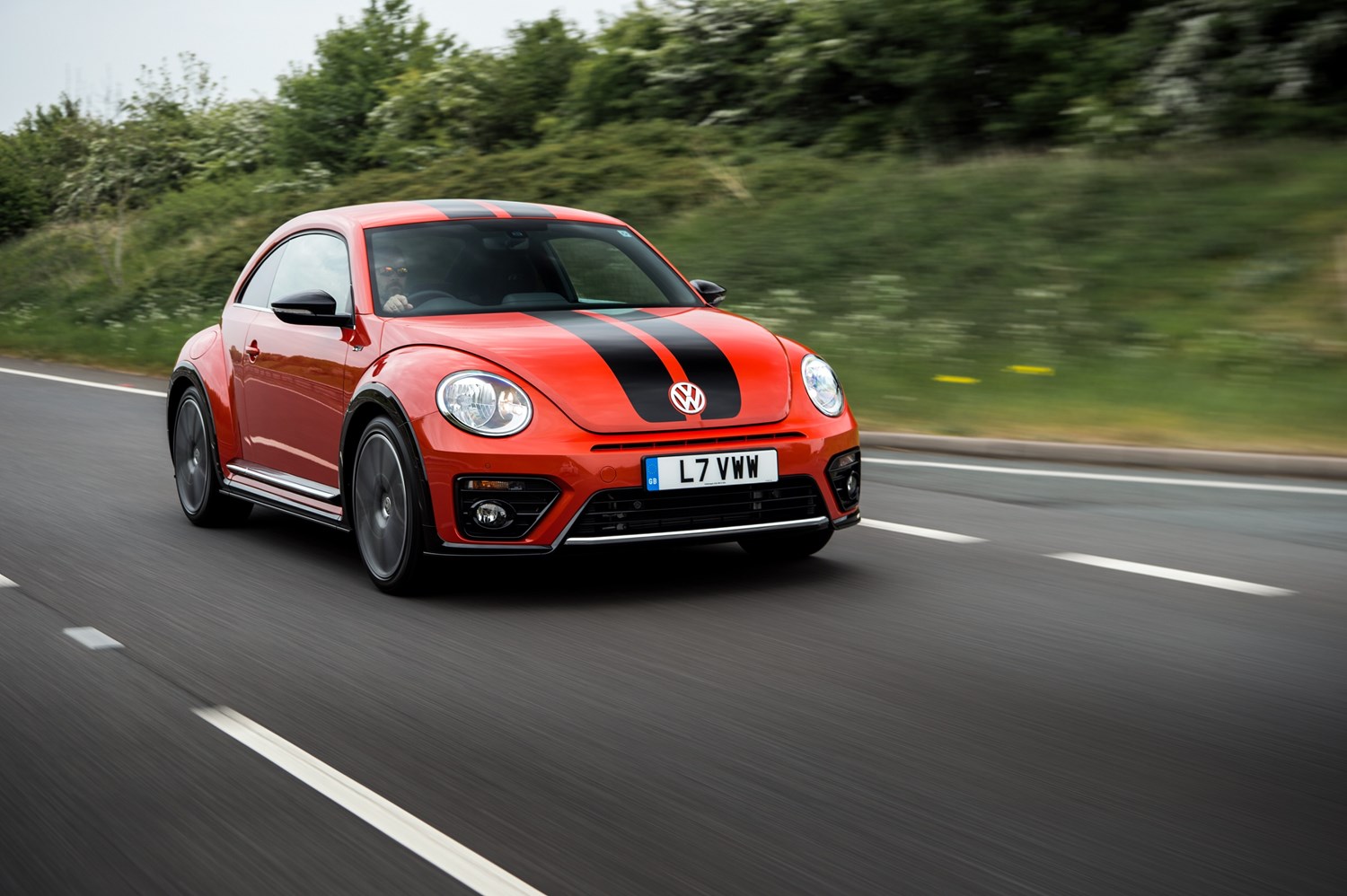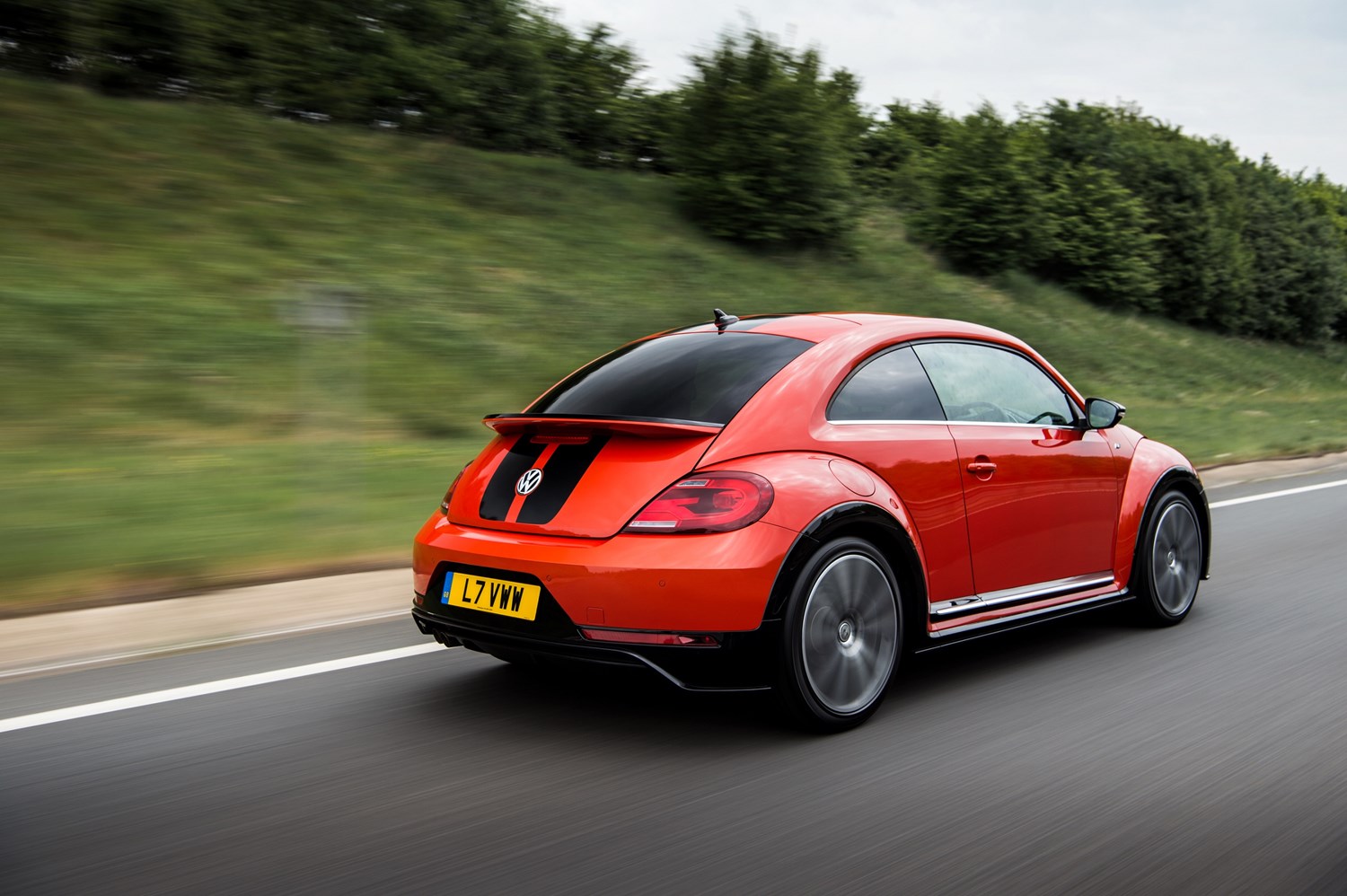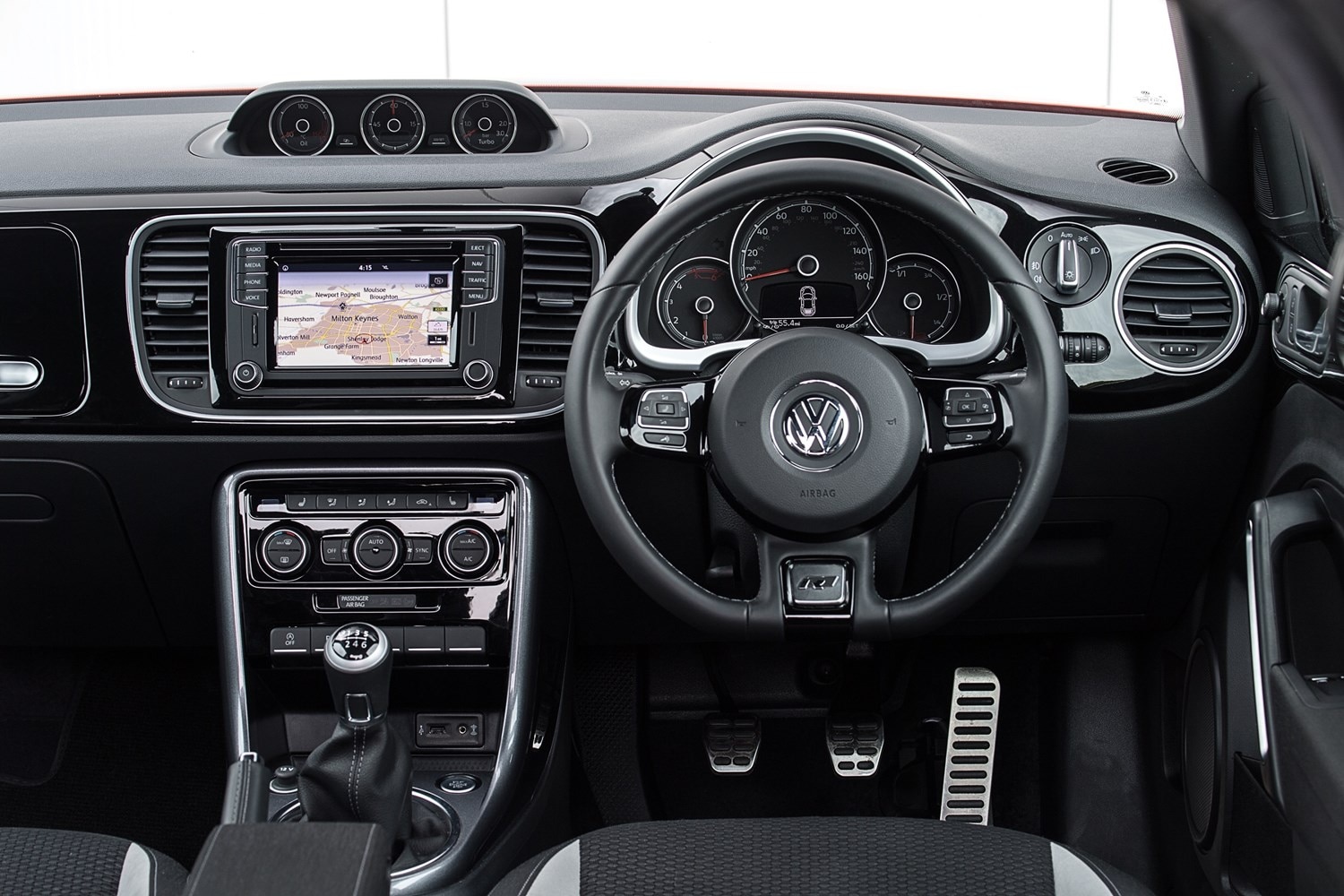Latest model
Debuting in 2011, the ‘A5’ version of the Volkswagen Beetle did an effective job of retaining some of the styling identity of the original Beetle, while modernising the silhouette and its details.
Dubbed ‘A5’ due to sharing the platform of the same name with the MKV and MKVI Golf variants, the underpinnings of the car were also significantly newer than the previous generation model, which had been on sale almost 15 years by the time it was pulled from production.
Over its lifetime it gained several special edition variants, including a Herbie ‘The Love Bug’-inspired 53 Edition for the Spanish market, and a sporting R-Line trim. A Final Edition model was announced to mark the conclusion of production for the US market, but the Beetle is no longer available as a new car in the UK.
The second-generation car placed a particular focus on colour to create a vibrant feel, with the option of body coloured interior trim in the Design spec, and a range of wheel options from modern designs to retro shapes.
Value for money
The very lowest price in the market for the first-generation Beetle is as low as £500, though these models will have between 100,000 and 150,000 miles on the clock, and will typically not be in a particularly good condition.
Post-2005 cars benefitting from a facelift – and the convertible variants available from 2003 onwards - tend to be found from around £1,100, though again, these models are high-mileage.
The best of the first-generation Beetles can be had for as little as £1,500, which can net you a post-facelift car with less than 70,000 miles on the clock. Examples of the convertible in a similar condition can be had for roughly £2,500.
The market for second-generation beetles starts a little south of £6,000, which will net you the near-ubiquitous Design trim variant, with as little as 70,000 miles on the clock.
Meanwhile, sub-50,000-mile models can be had for as little as £7,500, which is also roughly where the bottom end of the market is for the particularly rare convertible variants.
Nearly-new models on 18 plates can be had from £15,590, though this doesn’t represent too big of a saving from the £19,000 base price that existed while the car was new; however, these cars also represent the last chance to buy a near fresh-from-the-factory Beetle, so if you’re keen on the model, it may be worth the cash.
Looks and image
The Beetle’s design brief session was probably one of the simpler ones to attend. The two primary goals were to emulate the old car’s general shape, with a modern shape and a cute overall look. And, on the balance of things, the brief was met nicely.
The first-generation car is a slightly past-it take on new-retro – yes, that is possible – and it now sits in a bit of a grey area between looking truly dated and vaguely modern; that said, a good one will certainly have aged better than a MKIV Golf if you care about styling, but it’s one of those cars that particularly suffers aesthetically for not being looked after.
The 2011 onwards Beetle still looks the part, even though it is the better part of a decade old. Surprisingly, this Beetle can pull off a tracksuit; the sporting R-Line models are particularly smart, even if they minimise the histrionics somewhat.
Behind the wheel, there are few surprises. It drives like a Golf for the most part, and that is to say that it provides few surprises, with an equal lack of drawbacks. There are some differences compared to the car on which it is based, including a slightly firmer suspension and heavier steering, both of which exist as part of a mission statement to give the Beetle a sportier edge.
The heavy steering feels a little out of place on a car whose natural backdrop is a town or cityscape, and urban roads can get the better of the suspension, but overall, the car manages day-to-day life well.


